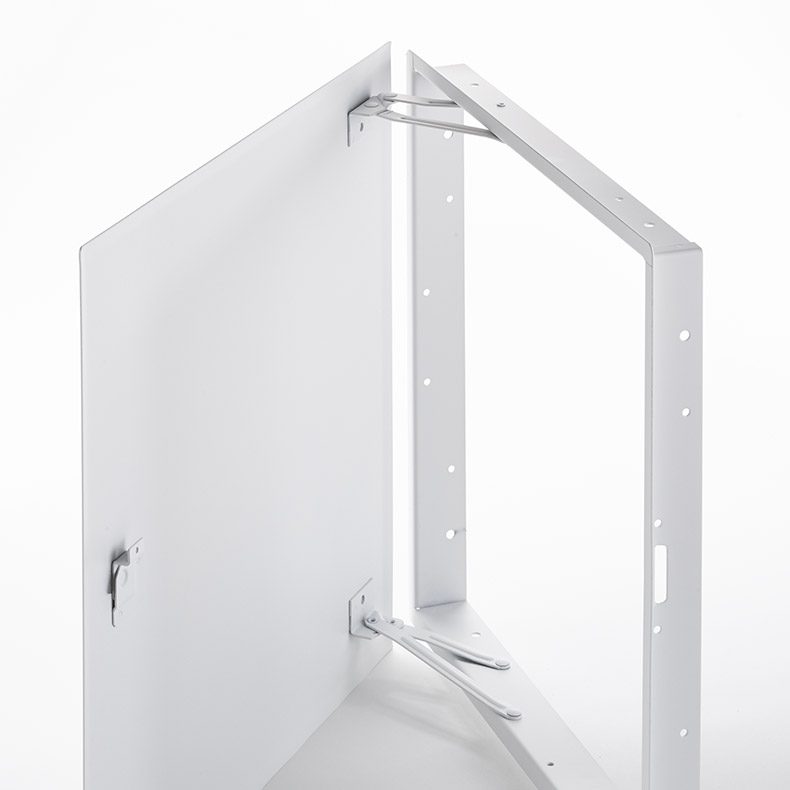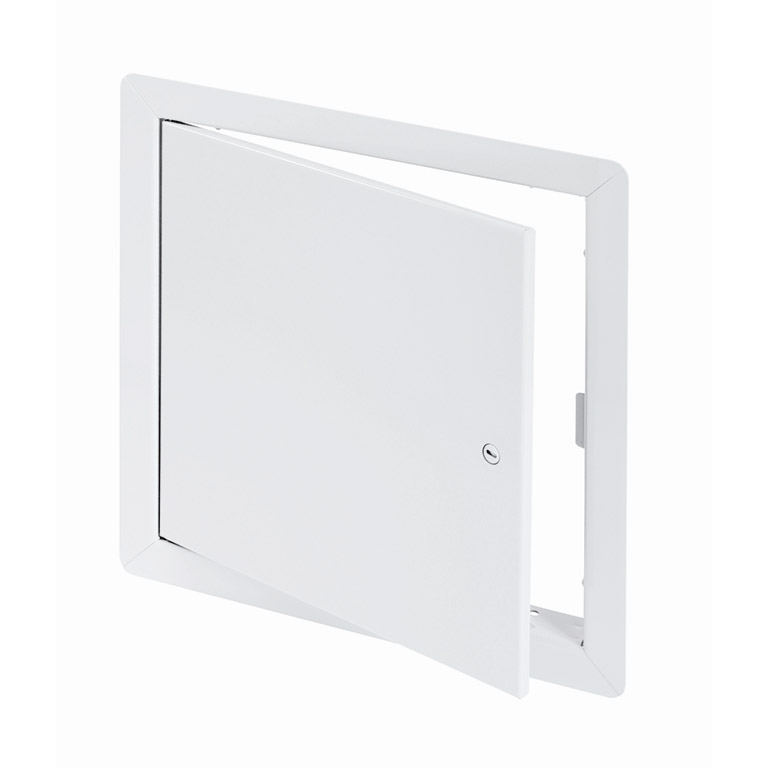When picking the right access panel for your project, a lot of factors contribute to your choice. Flanges, hinges, doors, locks and even fire treated are all options. Let's dive into types of hinges, two being a pantograph hinge and the pin hinge. The main difference between a pantograph hinge and a pin hinge lies in their design and mechanism of operation:
-
Design:
- Pantograph Hinge: Pantograph hinges typically consist of multiple interconnected bars or arms arranged in a folding pattern resembling the linkage system of a pantograph. This design allows for smooth and controlled movement, often in a linear or straight path. Pantograph hinges are often used in applications where space-saving and efficient motion are priorities.
-

-
- Pin Hinge: Pin hinges, also known as butt hinges or barrel hinges, are simpler in design and consist of two plates (leaves) connected by a pin or rod inserted through a cylindrical knuckle. This design allows the two leaves to rotate around the pin, enabling the opening and closing of the door or panel. Pin hinges are commonly used in a wide range of applications due to their simplicity and reliability.
-

-
Motion:
- Pantograph Hinge: Pantograph hinges typically provide linear or straight-line motion. They are designed to extend and retract in a controlled manner, making them suitable for applications where smooth and space-efficient movement is required, such as access panels or folding doors.
- Pin Hinge: Pin hinges provide rotational motion, allowing the attached door or panel to swing open and closed like a typical door. While they don't offer the same linear motion as pantograph hinges, pin hinges are versatile and widely used in various applications, including doors, cabinets, gates, and more.
-
Application:
- Pantograph Hinge: Pantograph hinges are often chosen for applications where space-saving and efficient motion are crucial, such as access panels in tight spaces, folding doors, or retractable covers.
- Pin Hinge: Pin hinges are versatile and can be found in a wide range of applications, including doors, cabinets, gates, and furniture. They are a common choice when simple, reliable rotational motion is required.
In summary, while both pantograph hinges and pin hinges serve the purpose of facilitating movement in doors or panels, they differ in design, motion characteristics, and suitability for different applications. Pantograph hinges excel in providing linear motion and space-saving benefits, while pin hinges offer simplicity and versatility in rotational motion.
